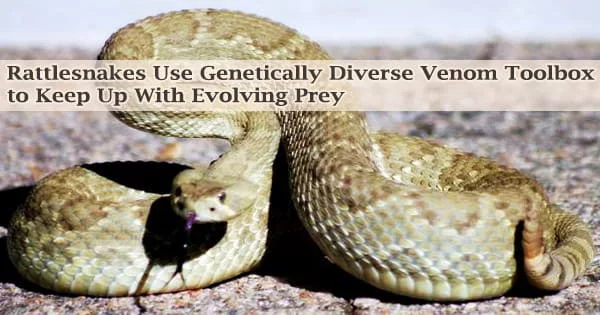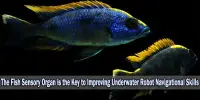Rattlesnakes and their prey compete in an evolutionary arms race, and in order to survive, rodents, birds, and other reptiles acquire tolerance to the snakes’ lethal venom. However, recent studies led by the Universities of Colorado Boulder and Texas at Arlington shed light on how snakes maintain their advantage. They do so by maintaining a large and varied toolkit of genes that encode snake venom, which enables them to adapt as local prey and environmental conditions change.
The research, which was just published in Nature Ecology and Evolution, sheds light on how rattlesnakes have survived despite prey species becoming more resistant to their poison over the course of millions of years.
This study challenges long-held beliefs about the causes of venom gene evolution and variation and throws new light on why it is still so difficult to create effective antivenoms for snakebites.
“We found these rattlesnakes had a more diverse venom repertoire, more genetic tools in the toolkit, than their venom composition alone might suggest,” said Drew Schield, lead author on the paper and postdoctoral fellow in Ecology and Evolutionary Biology at CU Boulder.
Different enzymes and toxins that makeup snake venom, an evolutionary adaption, let snakes catch their prey. For many years, researchers believed that co-evolution between predator and prey would result in highly specialized snake venom, with unused venom genes losing genetic variety as the venom evolved to effectively kill particular species.
This process, known in evolutionary biology as “directional selection,” is comparable to honing a knife; while the tool becomes more lethal, some of its original characters is lost in the process.
According to the latest research, “balancing selection” an evolutionary process where several copies of a gene in this example, genes that produce venom proteins are retained rather than eliminated is the mechanism at work. This may hold the secret to how snakes avoid reaching evolutionary dead ends.
“The existence of these resistance mechanisms in prey led us to wonder: If there’s selection pressure imposed back on the snakes, then it might make sense evolutionarily to have a more expanded venom arsenal,” said Schield.
Our findings help explain decades of seemingly contradictory theory and evidence for what drives the extreme variation observed in snake venoms. It turns out that the arms race between snakes and prey ends up favoring the constant re-shuffling of venom variants that are favored, leading to the retention of lots of venom variants over time, some of which are ancient.
Todd Castoe
Since rattlesnakes feed on a wide range of creatures, such as mice, voles, birds, and lizards, selection through time may not only maintain but actively select for a wider venom gene diversity. This has never been demonstrated in studies.
“Our findings help explain decades of seemingly contradictory theory and evidence for what drives the extreme variation observed in snake venoms. It turns out that the arms race between snakes and prey ends up favoring the constant re-shuffling of venom variants that are favored, leading to the retention of lots of venom variants over time, some of which are ancient,” said Todd Castoe, a co-author on the study and professor of biology at the University of Texas at Arlington.
Population-level insights
The location of the venom genes in the rattlesnake genome had largely remained a mystery until Schield’s studies as a graduate student and postdoctoral researcher at the University of Texas in Arlington in 2019.
He understood that scientists may look into what evolutionary forces had been at work on the venom genes now that they were aware of the genetic architecture of venom as a trait (as described in Genome Research).
Popular research focuses on snake venom, which offers a viable framework for comprehending how genes become new. The researchers concentrated on specific populations of rattlesnakes in Colorado, Montana, California, and Idaho because earlier studies in this field did not examine how selection has impacted this feature within closely related populations.
In late spring and early summer from 2017 to 2020, Schield and his co-authors visited a number of sites after scouting out the areas where these snakes resided. There, they collected 68 rattlesnakes from two different species that inhabit the western United States in order to sample their blood, and venom, and measure their physical characteristics.
They investigated genetic variation in sections of the genome containing venom genes by sequencing and analyzing the genomes of seven rattlesnake species. They added to the expanding body of evidence that balancing selection is more widespread in nature than previously believed. They discovered astonishing genetic diversity and significant evidence for natural selection retaining numerous versions of certain venom genes.
According to the results of the new study, Schield hypothesizes that while directional selection may have been responsible for the origins of venom, in more recent timescales, there may have been a change towards a balanced selection that favors a variety of venom repertoires. This could be one of the reasons why treating a snakebite is so infamously challenging.
“These evolutionary mechanisms ramp up the complexity that you’re contending with when you develop antivenoms, as venom composition within the same species but in different geographic regions might be totally different,” said Schield.
Advances in anti-venom treatments can help save lives all over the world by revealing how diverse venomous snake genomes, including those of rattlesnakes, cobras, and coral snakes, truly are stated Schield.
Additional co-authors on this publication include: Blair Perry of the University of Texas at Arlington and Washington State University; Richard Adams of Georgia College and State University; Matthew Holding of the University of Michigan; Zachary Nikolakis and Siddharth Gopalan of the University of Texas at Arlington; Cara Smith and Stephen Mackessy of the University of Northern Colorado; Joshua Parker of Fresno City College; Jesse Meik of Tarleton State University; and Michael DeGiorgio of Florida Atlantic University.
Funding for this work was provided by the National Science Foundation (NSF) and U.S. Department of Health & Human Services | National Institutes of Health (NIH).
















